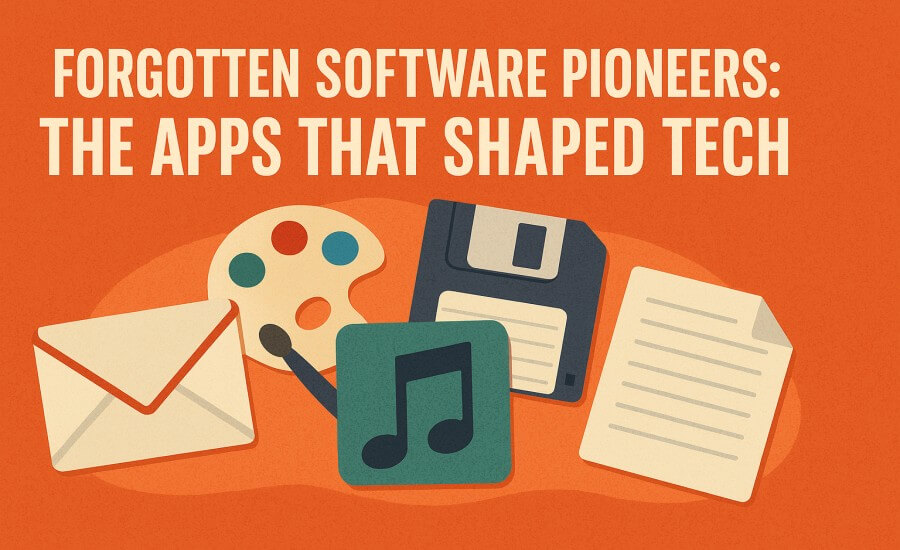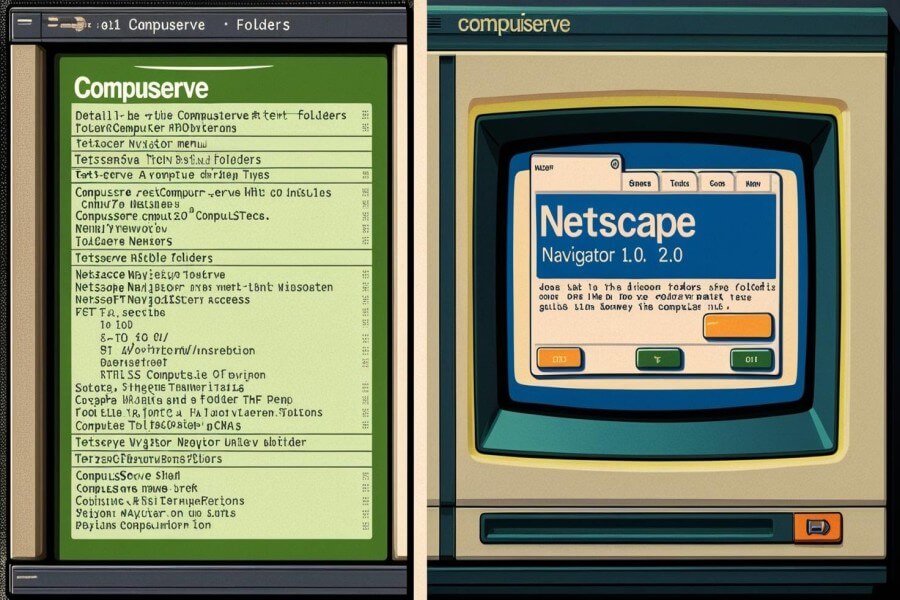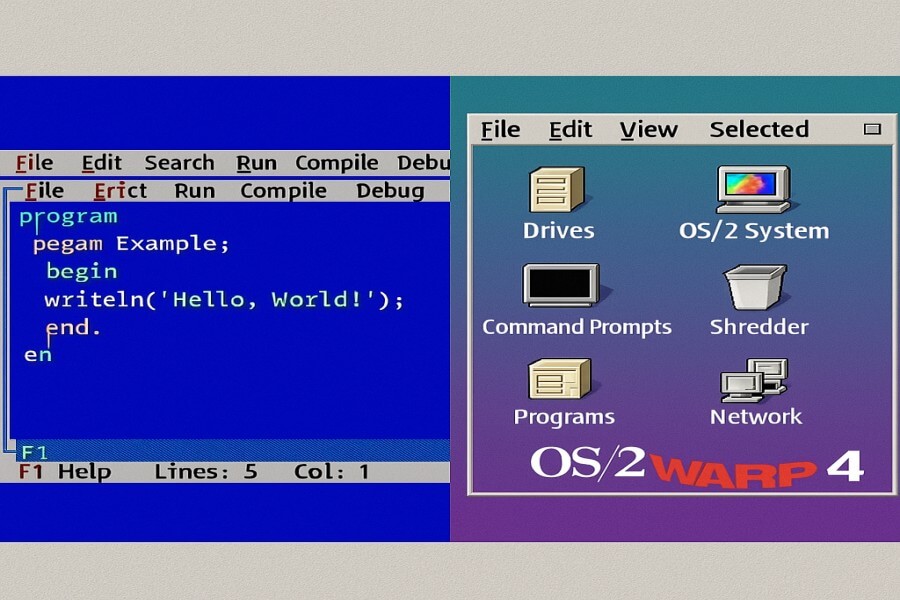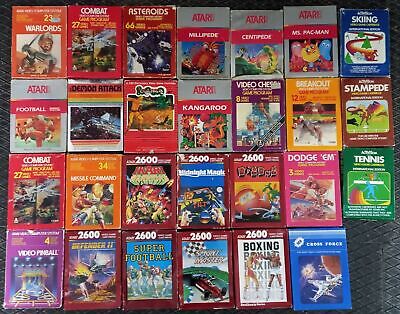
Imagine it’s the late 1970s or very early 1980s. You’re an accountant, a small business owner, perhaps a researcher. Complex financial modeling means hours hunched over ledger paper with a calculator and pencil, recalculating everything if a single number changes. While names like Microsoft, Apple, and Google dominate the tech narrative, a group of Forgotten Software Pioneers once laid the foundations of our digital age.
Early personal computers like the Apple II are intriguing, but mostly seen as hobbyist toys or tools for simple programming. Then, you encounter VisiCalc. On the screen is a grid, like your familiar ledger sheet.
You type numbers into cells. You type a formula. And then, the magic: change one number, and instantly, the entire spreadsheet recalculates before your eyes. It’s a revelation. Suddenly, the personal computer isn’t just a toy; it’s an indispensable productivity engine.
VisiCalc wasn’t just software; it was the “killer app” that launched the PC revolution. It’s just one of many foundational programs, true pioneers whose names might be forgotten today, but whose innovations underpin the digital world we inhabit. Let’s unearth some of these ghosts in the machine.
The Dawn of Productivity: Spreadsheets & Word Processing

Before slick office suites, two applications essentially defined PC productivity, convincing businesses and professionals that these new microcomputers were serious tools.
Pioneer Spotlight: VisiCalc (1979)
- What it was: The very first electronic spreadsheet program for personal computers, initially released for the Apple II.
- Who made it: Dan Bricklin conceived it, Bob Frankston co-developed it through their company Software Arts. Published by VisiCorp.
- Why it mattered: VisiCalc introduced the intuitive row-and-column grid, formulas, and crucially, automatic recalculation. This transformed financial modeling, planning, and “what-if” analysis from a tedious manual task into an interactive, dynamic process. It became the “killer application” that single-handedly drove sales of the Apple II, proving the PC’s business value. Later ported to other platforms like the IBM PC.
- Why it faded: While revolutionary, VisiCalc was slow to innovate and soon faced intense competition from faster, more feature-rich spreadsheets like Lotus 1-2-3 (released 1983), which became the new standard on the IBM PC, eventually leading to Microsoft Excel’s dominance. VisiCorp’s legal battles also hampered its progress.
- Legacy: Invented the electronic spreadsheet paradigm, arguably making the personal computer indispensable for business. Every spreadsheet today owes its existence to VisiCalc.
Pioneer Spotlight: WordStar (1979)
- What it was: One of the first and, for a long time, the most dominant word processing application for microcomputers, initially on the CP/M operating system, later MS-DOS.
- Who made it: Written primarily by Rob Barnaby, co-founded MicroPro International with Seymour I. Rubinstein.
- Why it mattered: WordStar offered features then considered advanced: mail merge capabilities and a form of “What You See Is What You Get” (WYSIWYG) that showed page breaks on screen. It was powerful and available on many early platforms. Its inclusion with the popular Osborne 1 portable computer cemented its status as the de facto standard word processor in the early-to-mid 1980s. Many famous authors wrote novels using WordStar. In India, learning WordStar commands was often a core part of early computer education courses.
- Why it faded: WordStar was notorious for its complex, non-intuitive command structure based heavily on Ctrl-key combinations (e.g., Ctrl+K+D to save). MicroPro was slow to develop versions that properly utilized function keys or mouse input, or offered true graphical WYSIWYG. Competitors like WordPerfect, with its cleaner interface and superior features (especially printer support), overtook WordStar by the late 1980s, before both eventually succumbed to Microsoft Word.
- Legacy: Defined early PC word processing, proving the viability of complex text editing on microcomputers. Its command structure, though archaic now, influenced some later text editors.
Parallel Developments (Late 70s – Mid 80s)
- Apple II (1977), TRS-80 (1977), Commodore PET (1977) launch early personal computers.
- CP/M becomes a standard OS for early 8-bit business microcomputers.
- IBM PC launches (1981), establishing a new hardware standard. MS-DOS becomes its primary OS.
- Lotus 1-2-3 (1983) launches, becomes the killer app for the IBM PC.
User Experience Snapshot
Imagine learning WordStar’s cryptic commands (^KB to mark beginning of block, ^KC to copy it!). It was powerful but required memorization. VisiCalc, while simpler conceptually, still involved navigating cells with arrow keys and typing precise formulas.
These tools demanded effort but offered unprecedented power compared to typewriters or manual calculation.
Accessing these programs in India often meant using computers at institutes or offices, frequently running non-original copies due to prohibitive costs.
Price Point Perspective
Early business software was expensive. VisiCalc launched under $100 USD, but WordStar was priced at $495 USD in 1979 (thousands in today’s money).
This high cost contributed to widespread software piracy, especially outside North America. Bundling deals (like WordStar with the Osborne 1) were crucial for adoption.
Shaping the Desktop: DTP & Utilities

As computers gained graphical capabilities, new software categories emerged to leverage the visual interface, while essential utilities kept things running smoothly.
Pioneer Spotlight: Aldus PageMaker (1985)
- What it was: The groundbreaking software application that effectively launched the Desktop Publishing (DTP) revolution. Initially released for the Apple Macintosh.
- Who made it: Paul Brainerd and his company, Aldus Corporation.
- Why it mattered: PageMaker, combined with the Mac’s graphical user interface and Apple’s LaserWriter printer (which supported Adobe’s PostScript language), allowed users – for the first time – to create professional-quality documents with integrated text and graphics, seeing the layout on screen (WYSIWYG) before printing. It democratized graphic design and typography, previously the domain of expensive typesetting systems. It was later ported to Windows, helping popularize that platform too.
- Why it faded: Aldus was slow to add features compared to competitor QuarkXPress, which captured the professional market in the 1990s. After Adobe acquired Aldus in 1994, PageMaker development slowed further. Adobe eventually replaced it with their own “Quark killer,” Adobe InDesign (launched 1999). The final version of PageMaker was released in 2001.
- Legacy: Created the entire field of Desktop Publishing, revolutionizing graphic design, printing, and how documents are created. Its core concepts live on in InDesign, QuarkXPress, and even modern word processors.
Pioneer Spotlight: Norton Utilities (1982)
- What it was: An indispensable suite of utility software for IBM PC compatibles running MS-DOS.
- Who made it: Peter Norton and his company, Peter Norton Computing.
- Why it mattered: Its most famous component was UNERASE, a magical tool that could often recover accidentally deleted files – a lifesaver in the days before Recycle Bins. The suite also included tools for disk diagnostics (checking for errors), defragmentation (optimizing disk speed), viewing system information, and more. In the fragile environment of early DOS PCs, Norton Utilities was considered essential for maintaining system health and recovering from disasters. The packaging, featuring Peter Norton himself with confidently crossed arms, became iconic.
- Why it faded: Over time, operating systems like Windows began integrating many of these essential functions (disk checking, defragmenting, recycle bins) directly, reducing the need for a separate utility suite for basic tasks. While the Norton brand (acquired by Symantec in 1990) continues today, primarily focused on security, the original all-encompassing utility suite’s role diminished as OS capabilities grew.
- Legacy: Created the market for third-party system utilities. The concept of file recovery became a standard OS feature. The Norton brand remains synonymous with PC maintenance and security.
Parallel Developments (Mid 80s – Mid 90s)
- Apple Macintosh launches (1984) popularizing the GUI.
- Laser printers and PostScript become available, enabling high-quality output.
- Windows 3.0/3.1 (1990/1992) makes GUIs viable on PCs.
- PCs become more powerful with 286, 386, 486 processors. Hard drive capacities increase.
User Experience Snapshot
Laying out a newsletter in PageMaker, visually placing text and images exactly where you wanted them, felt incredibly empowering compared to code-based typesetting or literal cut-and-paste.
Running Norton Disk Doctor and watching it diagnose and potentially fix errors on your precious hard drive provided immense peace of mind. Accidentally deleting a crucial file, then successfully recovering it with UNERASE? Pure relief and magic.
Price Point Perspective
PageMaker was professional software with a professional price tag (several hundred dollars). Norton Utilities was more affordable (under $100 USD) but still a considered purchase, though its value in saving data often made it seem cheap.
Organizing Information: Early PC Databases
As PCs entered businesses, managing lists, inventories, and customer information became crucial. This led to the rise of database management systems (DBMS) tailored for microcomputers.
Pioneer Spotlight: dBase (II – 1980)
- What it was: The first widely successful relational database management system for microcomputers, defining the market for years (initially CP/M, then MS-DOS).
- Who made it: Developed by C. Wayne Ratliff (based on his earlier “Vulcan” system, inspired by JPLDIS), marketed and popularized by Ashton-Tate.
- Why it mattered: dBase allowed users to create, organize, query, and report on structured data. Critically, it included its own programming language (now often called xBase) that allowed developers (and savvy users) to build custom applications on top of the database engine. This created a massive ecosystem of dBase developers, consultants, and third-party tools. It became the standard for small business database applications throughout much of the 1980s. In India, dBase skills were highly sought after in the early IT industry and taught widely.
- Why it faded: Later versions, particularly dBase IV (1988), were notoriously buggy and slow, damaging its reputation. The programming language, while powerful, could be complex. Competitors like Clipper, FoxBASE (later FoxPro), and Paradox offered faster performance and better features. Eventually, easier-to-use relational databases designed for graphical environments, especially Microsoft Access, captured the market. Ashton-Tate was acquired by Borland in 1991, which struggled to revive dBase’s fortunes.
- Legacy: Established the PC database market. The xBase language influenced many subsequent database languages. The .DBF file format it created was used by numerous other applications for decades.
Parallel Developments (Early-Mid 1980s)
- IBM PC dominates the business market.
- Small businesses increasingly adopt PCs for accounting, inventory, and data management.
- Relational database theory (developed in the 70s) starts being implemented on microcomputers.
User Experience Snapshot
Working with dBase often meant interacting with its “dot prompt,” typing commands like USE CUSTOMER, LIST FOR STATE = ‘CA’, APPEND BLANK. While powerful, it required learning the specific command syntax. Creating custom applications involved writing code in the dBase language. It wasn’t as immediately intuitive as a spreadsheet but offered far more power for managing structured data.
Price Point Perspective
dBase was premium business software, costing several hundred dollars, placing it out of reach for many casual users but making it a standard investment for businesses needing database capabilities.
Connecting the World (Early Days): Online Services & Browsers

Before the modern web browser and ubiquitous internet, pioneering services and software provided the first glimpses of an interconnected digital world.
Pioneer Spotlight: CompuServe (Founded 1969, popular 80s/90s)
- What it was: One of the earliest and largest commercial online services, offering a wide range of information and communication features via dial-up access.
- Who made it: Initially a business time-sharing service, evolved into a consumer online service. Acquired by AOL later.
- Why it mattered: CompuServe provided paying subscribers with email, real-time chat (its CB Simulator was legendary), discussion forums (organized by topic), file download libraries (it helped standardize the GIF image format), news wires, stock quotes, airline reservations, and more. It was a self-contained “walled garden” online world, introducing millions to concepts like email and online communities before the open World Wide Web took over.
- Why it faded: Its per-hour pricing model became uncompetitive against flat-rate ISPs and services like AOL. Its complex interface and numbered menus felt dated compared to the graphical web. Ultimately, the open, decentralized World Wide Web offered far more content and innovation, making proprietary online services like CompuServe less relevant.
- Legacy: Pioneered many online service concepts (email, chat, forums, file downloads). Helped build the first large-scale online communities. Demonstrated the commercial viability of online information services.
Pioneer Spotlight: Netscape Navigator (1994)
- What it was: The first commercially successful graphical web browser, responsible for popularizing the World Wide Web.
- Who made it: Netscape Communications Corporation, founded by Jim Clark and Marc Andreessen (who co-created the earlier Mosaic browser).
- Why it mattered: Netscape Navigator provided an easy-to-use, graphical interface for Browse the burgeoning Web. It introduced or popularized key web technologies like SSL (for secure connections), JavaScript, cookies, and frames. Its overwhelming market share (around 90% at its peak) meant its implementation of HTML often became the de facto standard. It essentially opened up the visual, interactive web to the general public.
- Why it faded: Microsoft bundled Internet Explorer (IE) for free with Windows 95/98, aggressively leveraging its OS monopoly to capture the browser market (the core issue in the US v. Microsoft antitrust case). Netscape also made strategic errors (like the delayed and buggy Netscape Communicator 4.0 suite). While its codebase was open-sourced (leading to the Mozilla project and Firefox), Netscape Navigator itself eventually faded and was discontinued by owner AOL in 2008.
- Legacy: Made the World Wide Web accessible and popular. Its technological innovations shaped modern web development. Its battle with IE defined the first “Browser War.” Its open-source successor, Firefox, continues to be a major browser.
Parallel Developments (Late 80s – Late 90s)
- Dial-up modems become faster (14.4k, 28.8k, 56k).
- World Wide Web protocols (HTTP, HTML) developed by Tim Berners-Lee.
- Mosaic browser (1993) provides early graphical web access.
- Internet Service Providers (ISPs) offer public internet access, competing with online services like CompuServe and AOL.
- Microsoft launches Windows 95 with bundled Internet Explorer.
User Experience Snapshot
Logging into CompuServe involved navigating text menus with cryptic commands or numbers.
It felt exclusive, like belonging to a private club. Browse with Netscape Navigator 1.0 or 2.0, seeing images load alongside text, clicking hyperlinks – this felt revolutionary, like exploring a vast, visually interconnected library.
The difference between the walled garden and the open web was stark.
Price Point Perspective
CompuServe charged hourly connection fees, which could quickly become expensive. Netscape Navigator was initially sold but quickly became free for non-commercial use to gain market share, a strategy that fueled its rapid adoption but made monetization difficult later.
Beyond the Mainstream: Programming & OS Alternatives

Beyond the applications used by the masses, some influential tools and platforms shaped the underlying technology or offered powerful alternatives, even if they are less remembered today.
Pioneer Spotlight: Turbo Pascal (1983)
- What it was: A hugely popular compiler and Integrated Development Environment (IDE) for the Pascal programming language on CP/M and MS-DOS.
- Who made it: Developed by Anders Hejlsberg (later chief architect of C# and TypeScript at Microsoft) for Borland International.
- Why it mattered: Turbo Pascal revolutionized programming on personal computers. It was incredibly fast (compiling thousands of lines per minute on machines of the era), remarkably affordable ($49.99 at launch, compared to hundreds for other compilers), and featured an integrated editor, compiler, and linker in one package. This made structured programming accessible and practical for students, hobbyists, and professionals alike. It dominated Pascal programming on PCs for years and was a major influence on many developers.
- Why it faded: While Object Pascal (via Borland’s Delphi) extended its life, the industry largely shifted towards C, then C++, and later Java and C# for mainstream application development, diminishing Pascal’s relevance.
- Legacy: Made fast, affordable, integrated development environments the standard. Popularized structured programming on microcomputers. Launched Anders Hejlsberg’s influential career.
Pioneer Spotlight: OS/2 (1987)
- What it was: An ambitious operating system initially co-developed by IBM and Microsoft intended as the successor to DOS for IBM’s PS/2 line and beyond.
- Who made it: IBM and Microsoft (initially), then primarily IBM after their “divorce.”
- Why it mattered: OS/2 was technically advanced for its time, offering true preemptive multitasking, protected memory (making it more stable than early Windows), and a sophisticated object-oriented GUI called the Workplace Shell (in version 2.0 onwards). It could run DOS and Windows 3.x applications well. It represented a technically superior alternative to Windows in many ways during the late 80s and early 90s.
- Why it faded: OS/2 suffered from high initial hardware requirements, delays, complex development, shifting strategies between IBM and Microsoft, poor marketing, and critically, less application support than Windows. Microsoft focused its efforts on Windows, leveraging its DOS dominance, and ultimately won the desktop OS war with Windows 95. IBM eventually ceased development (support ended 2006), though OS/2 survived for years in niche markets like ATMs and industrial systems.
- Legacy: Showcased advanced OS features (preemptive multitasking, object-oriented GUI) years before they became mainstream on consumer Windows. Its failure is a major case study in tech platform wars and strategic missteps. Some of its technology influenced later versions of Windows (NT).
Parallel Developments (Mid 80s – Mid 90s)
- Intel 386 and 486 processors provide power needed for GUIs and multitasking.
- Microsoft releases Windows 3.0 (1990) and 3.1 (1992), which become immensely popular despite technical limitations compared to OS/2.
- The C++ programming language gains traction for application development.
User Experience Snapshot
Firing up the Turbo Pascal IDE, typing code, and hitting compile – seeing it compile almost instantly felt amazing compared to the slow compilers of the time. Using OS/2’s Workplace Shell, dragging objects around, felt powerful and stable compared to the often-crash-prone Windows 3.1, but finding native OS/2 applications could be a challenge.
Price Point Perspective
Turbo Pascal’s low price was revolutionary. OS/2 was positioned as a premium operating system, often costing more than DOS/Windows upgrades, contributing to its slower adoption.
Why They Faded: The Digital Dustbin
These pioneers, once dominant or revolutionary, mostly faded for common reasons:
- Superseded by Better Technology: Newer competitors offered more features, better performance, or greater ease of use (Lotus 1-2-3 > VisiCalc, WordPerfect/Word > WordStar, QuarkXPress/InDesign > PageMaker, IE > Netscape).
- Platform Shifts: The move from CP/M to DOS, then DOS to Windows, and later the rise of the Web and Mobile left behind software tied too closely to older platforms or paradigms (WordStar, dBase, CompuServe, OS/2).
- Market Consolidation & Business Decisions: Acquisitions (Aldus by Adobe, Norton by Symantec, Ashton-Tate by Borland) sometimes led to products being sidelined or phased out. Poor marketing or buggy releases (dBase IV, OS/2) damaged reputations. Microsoft’s bundling of IE with Windows crippled Netscape.
- Integration into OS: Core functionalities provided by utilities like Norton Utilities were eventually built directly into operating systems, reducing the need for standalone products.
Full Circle Reflections
The sleek interfaces and seamless functionality we take for granted today didn’t spring into existence overnight. They stand on the shoulders of giants – software pioneers like VisiCalc, WordStar, PageMaker, dBase, Netscape Navigator, and many others.
These applications defined categories, introduced revolutionary concepts, and fundamentally shaped how we interact with computers. They turned PCs from hobbyist curiosities into indispensable tools for productivity, creativity, and connection.
While their names may evoke only faint recognition now, lost in the relentless march of upgrades and replacements, their DNA is embedded in the software we use every single day.
The spreadsheet grid, WYSIWYG editing, desktop publishing layouts, relational databases, the graphical web browser – these were radical ideas forged by these forgotten pioneers.
Remembering them isn’t just tech nostalgia; it’s acknowledging the foundations upon which our entire digital world was built. They are the ghosts in the machine, and their code echoes still.
The Heritage Impact: Code That Changed the World
These forgotten pioneers left an immense legacy:
- Established Core Paradigms: Invented or popularized fundamental software categories (spreadsheet, PC word processing, DTP, PC database, GUI utilities, web browser).
- Drove Hardware Adoption: “Killer apps” like VisiCalc were primary reasons people bought early personal computers.
- Launched Industries: PageMaker created the DTP industry; Norton Utilities created the PC utility market; dBase spawned an ecosystem of developers.
- Influenced Future Software: Their successes and failures provided crucial lessons that informed the design of the applications we use today.
- Democratized Technology: Made powerful computing capabilities (calculation, publishing, database management, web access) accessible beyond mainframes and specialists.
They may be gone from our desktops, but their impact is everywhere.
FAQ: Remembering the Pioneers
- What was VisiCalc and why was it important?
VisiCalc (1979) was the first electronic spreadsheet program for personal computers (initially Apple II). Its instant recalculation feature made it a “killer app” that transformed PCs into serious business tools and drove early hardware sales. - What was the dominant word processor before Microsoft Word?
WordStar was dominant in the early-to-mid 1980s (on CP/M and DOS), known for its power but complex commands. WordPerfect then overtook WordStar in the late 80s/early 90s before ultimately losing market share to Microsoft Word. - What software pioneered Desktop Publishing (DTP)?
Aldus PageMaker (1985), especially when combined with the Apple Macintosh and LaserWriter printer, is credited with launching the DTP revolution, allowing users to create professional layouts with text and graphics visually. - What was Netscape Navigator?
Netscape Navigator (1994) was the first commercially successful graphical web browser that popularized the World Wide Web for the general public. It dominated the market in the mid-90s but lost the first “Browser War” to Microsoft’s Internet Explorer. Its code eventually led to Mozilla Firefox. - Why is it important to remember forgotten software?
Remembering these pioneers helps us understand how current technology evolved. It highlights fundamental innovations we now take for granted, offers lessons from past successes and failures in design and business strategy, and gives credit to the individuals and companies who built the foundations of the digital age.






